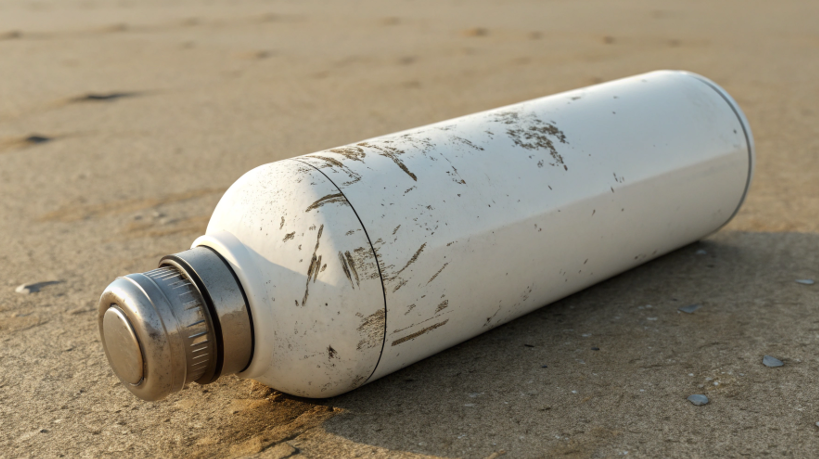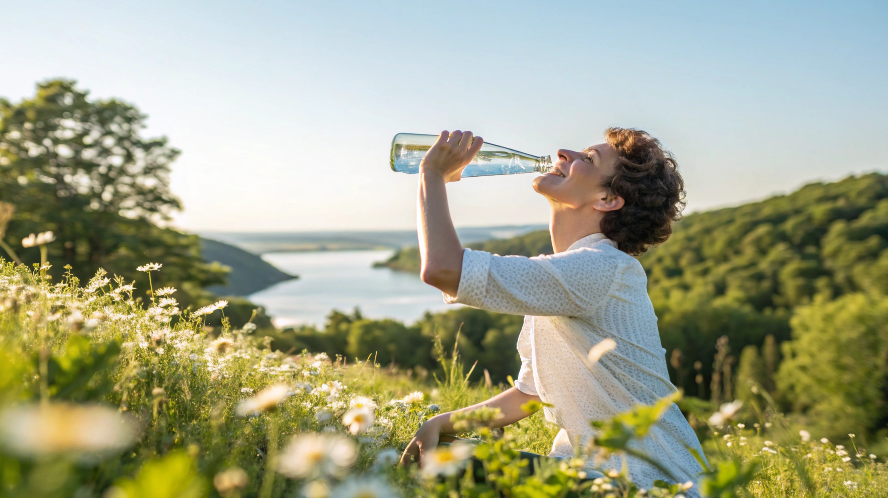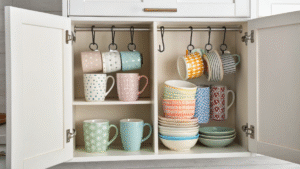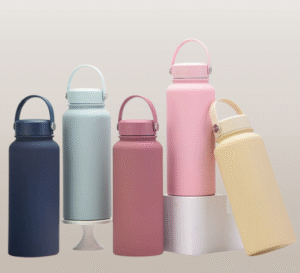Choosing your daily water bottle is confusing. You want a safe, durable option, but the wrong choice can lead to breakage, weird tastes, or even health concerns. The decision feels overwhelming.
For most people, a stainless steel bottle is better for daily use due to its superior durability and lighter weight. However, glass offers the purest taste, making it ideal for those who are sensitive to flavor and primarily use their bottle at home or in the office.
As the founder of Vivimug, I help product developers like Emily decide on the perfect materials for their drinkware lines every day. While the short answer is "it depends," the real choice comes down to balancing durability, taste, health, and portability. You need to know the specific pros and cons of each to find the right fit for your customers' lives. Let's break down the details so you can make an informed decision for your brand or your own daily hydration.
Is it healthier to drink from glass or stainless steel?
Worried about chemicals leaching into your water? Choosing a bottle material can feel like a health minefield, and you don’t want to accidentally pick a toxic option for your customers.
Both high-quality food-grade stainless steel (18/8 or 304) and glass are exceptionally healthy choices. They are both non-toxic and stable, meaning they won't leach harmful chemicals into your water. Your choice between them can be based on other factors, not health concerns.
!
When product developers ask me this, I explain that from a health standpoint, they are standing on solid ground with either material. Glass is a champion of purity. It's completely inert, which just means it doesn't react with what's inside it. There are no chemicals in glass that can leach into your water, period. The water you put in is the water you get out. Food-grade stainless steel is also a fantastic choice. The "18/8" refers to the 18% chromium and 8% nickel in the alloy. This specific composition makes the steel highly resistant to rust and corrosion, and it forms a passive, non-reactive layer on the surface. This layer prevents any metals from getting into your drink. The key for a developer like Emily is to demand material-grade certifications from suppliers. A cheap, uncertified bottle might not be true 18/8 steel. But with proper sourcing, both materials are a world away from old plastic bottles that contained BPA.
Health & Safety Comparison
| Feature | Glass | Food-Grade Stainless Steel |
|---|---|---|
| Purity | Completely inert, zero taste or odor transfer. | Highly non-reactive, rare for sensitive users to notice a taste. |
| Leaching Risk | None. It is a one-ingredient material. | None, when certified 18/8 or 304 grade is used. |
| BPA/Phthalates | Naturally free of all plastic chemicals. | Naturally free of all plastic chemicals. |
| Key to Safety | Ensure it is lead-free (especially with decorated glass). | Verify the material grade (18/8 or 304) with your supplier. |
What are the disadvantages of a stainless steel water bottle?
Stainless steel bottles seem perfect for an active lifestyle, but are they? You might be overlooking downsides that could frustrate customers, like dents, weight, or even a metallic aftertaste.
The main disadvantages of stainless steel bottles are that they can dent when dropped, they are opaque so you can't see the liquid level, and some very sensitive users might detect a slight metallic taste, especially when the bottle is brand new.

I always advise my clients to be honest about a product's full profile, including its weaknesses. While stainless steel is famous for durability, it's not indestructible. A hard drop onto concrete can definitely leave a dent. In a vacuum-insulated bottle, a bad dent can even break the vacuum seal and ruin its insulation properties. Many brands creatively solve this by adding a silicone "boot" to the base, which is a smart design choice. Another point is taste. For 99% of people, 18/8 steel is taste-neutral. But I have encountered a few customers over the years who are sensitive to a faint metallic taste. This can usually be fixed by washing the bottle with vinegar and baking soda before the first use. Finally, there is the simple usability issue of opacity. You can't see how full it is. This might seem minor, but for someone tracking their water intake, it's a real factor. The weight can also be a downside compared to plastic, though it's often lighter than a comparable glass bottle.
Common Issues & Developer Solutions
| Disadvantage | Customer Impact | Potential Design Solution |
|---|---|---|
| Denting | Can look bad, affect stability, or ruin insulation. | Add a protective silicone sleeve or "boot" to the base. |
| Taste | A small percentage of users may notice a metallic taste. | Recommend a pre-use cleaning process; ensure high-grade steel. |
| Opacity | User cannot see how much liquid is left. | Design products with a clear lid or an integrated level indicator. |
| Cleaning | Narrow openings can be difficult to scrub inside. | Prioritize wide-mouth designs for easier cleaning access. |
Which is better stainless steel or glass water bottles?
The choice between steel and glass is paralyzing. You need to decide for your product line, but each has valid pros and cons. How do you choose the outright winner for your customers?
"Better" truly depends on the user's lifestyle. Stainless steel is better for anyone who needs durability and portability, like commuters and athletes. Glass is a better choice for flavor purists in controlled environments like a home or office.

This is the core question I help brands answer. The "better" bottle is the one that best fits the target customer's daily routine. For a product developer, the task is to match the material to that routine. Let's do a direct comparison. For durability, stainless steel is the undisputed champion. It can take a beating. Glass, even tough borosilicate glass, will shatter if dropped hard enough. If your target customer is a hiker, a parent, or anyone on the move, steel is the safer bet. For taste, glass is the winner. It's like drinking from a clean cup every single time. It imparts zero flavor. For insulation, steel is the only real choice. A double-wall, vacuum-insulated stainless steel bottle can keep water ice-cold for 24 hours. A double-wall glass bottle exists, but its performance is far weaker and it's much more fragile. Finally, consider weight. A simple, single-wall steel bottle is often lighter than a glass bottle of the same size. So for portability, steel usually wins again.
Head-to-Head Comparison
| Attribute | Stainless Steel | Glass | The Winner |
|---|---|---|---|
| Durability | High (dents but rarely breaks) | Low (can shatter) | Stainless Steel |
| Taste Purity | Excellent | Perfect | Glass |
| Insulation | Excellent (with vacuum insulation) | Poor to Fair | Stainless Steel |
| Weight | Lighter than glass (typically) | Heavier than steel (typically) | Stainless Steel |
| Portability | High | Low | Stainless Steel |
What is the healthiest container to drink water from?
You want the absolute safest option for drinking water. With so many materials and marketing claims, it's hard to know which container is genuinely the healthiest choice for you and your family.
The healthiest containers to drink water from are high-quality glass and food-grade (18/8 or 304) stainless steel. Both are fundamentally inert, non-toxic, and do not leach chemicals, ensuring the water you drink remains pure and safe.

When we move beyond a simple comparison and ask for the absolute "healthiest," the answer is still a tie between these two top contenders. If I had to rank them, I would place glass at the number one spot, simply because of its elemental purity. It's essentially melted sand. There are no alloys, no complex compositions, just pure, inert glass. Its safety is undisputed and has been for centuries. Immediately behind it, in a very close second place, is food-grade stainless steel. The key, as I always stress to developers like Emily, is the "food-grade" certification. This ensures the steel alloy is stable and won't react with your water. Both of these are far superior to any plastic. While modern BPA-free plastics like Tritan are considered safe, glass and steel are in a higher class of their own for purists who want zero risk of any chemical interaction. One final point for health: ease of cleaning. A container can only be healthy if it's clean. A bottle that is hard to clean can grow bacteria. This is why a wide-mouth design is often a healthier choice than a narrow-neck one, regardless of the material.
Conclusion
For daily on-the-go use, durable stainless steel is your best bet. For the purest taste at home or the office, choose glass. Both are excellent, healthy choices over plastic.



